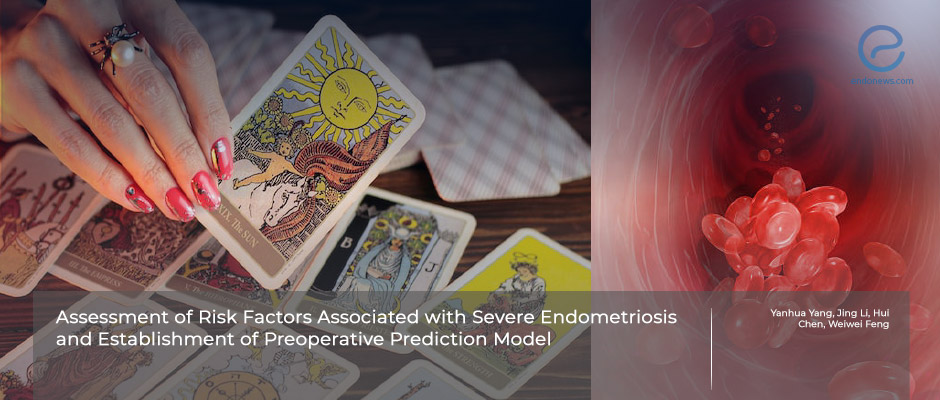Foreseeing what will be seen on laparoscopy
Dec 7, 2022
The predictivity of endometriosis severity by preoperative parameters
Key Points
Highlights:
- Not only findings seen on ultrasound but also some blood parameters related to hypercoagulability indicate severe disease.
Importance:
- Endometriosis diagnosis relies on preoperative prediction and needs histopathologic confirmation of biopsy material.
- A prediction model for forecasting what would be waiting for the surgeon and the patient will be promising to get prepared.
What's done here:
- To investigate the risk factors of severe endometriosis for establishing a preoperative prediction model, a retrospective analysis of a database of endometriotic women was performed.
- All 491 patients had pathology-confirmed endometriosis diagnosis.
- Non-pregnant patients older than 18 years old with a normal hepatic and renal function who have undergone endometriosis surgery and have a high-quality imaging assessment have been included. Those who have malignancy, infectious diseases, and use anticoagulants or GnRH agonists were excluded.
- CA125 level, blood count, and coagulation parameters have been noted in addition to operative findings and staging of the disease with ASRM classification.
Key Results:
- Among 491 subjects, 165 had stage I–III disease, and 326 (66.4%) had stage IV disease.
- Women older than 40 who have bilateral lesions, pelvic nodules, adenomyosis, and cysts bigger than 58mm had a higher probability to be in the severe group.
- Shorter aPTT, CA125, and D-dimer levels were also more common in the severe group.
- Larger cysts, APTT level, CA125 level, and D-dimer levels were independent risk factors for having severe disease.
- The logistic regression equation for these factors showed good diagnostic efficiency.
Limitations:
- The results look promising, and the number of data included is appropriate but it has to be reevaluated with prospective studies.
Lay Summary
Endometriosis diagnosis still relies on preoperative prediction and its confirmation by taking biopsies. Thus, a prediction model for forecasting what would be waiting for the surgeon and the patient will be promising to get prepared.
In the study conducted by Yanhua Yang et al, the authors collected data from patients to find the correlation between preoperative evaluations and operative findings. The database included non-pregnant patients older than 18 years old; who have a normal hepatic and renal function; have undergone endometriosis surgery and have a high-quality imaging assessment. CA125 level, blood count, and coagulation parameters have been noted in addition to operative findings and staging of the disease with ASRM classification.
Among 491 subjects, 165 had stage I–III disease, and 326 (66.4%) had stage IV disease. Women older than 40 who have bilateral lesions, pelvic nodules, adenomyosis, and cysts bigger than 58mm had a higher probability to be in the severe group. Shorter aPTT, CA125, and D-dimer levels have been calculated in the severe group. Shorter aPTT, CA125, and D-dimer levels were also more common in the severe group.
The logistic regression equation for these factors showed good diagnostic efficiency. While it is a retrospective study and aimed to find a correlation model for predicting operative findings with preoperative values, the study also highlighted an important finding which is the tendency of having hypercoagulability in patients with severe disease meaning proper medication will be necessary.
This article was published in the September issue of the journal named Diagnostics.
Research Source: https://pubmed.ncbi.nlm.nih.gov/36292037/
prediction models endometriosis hypercoagulability D-dimer aPTT

